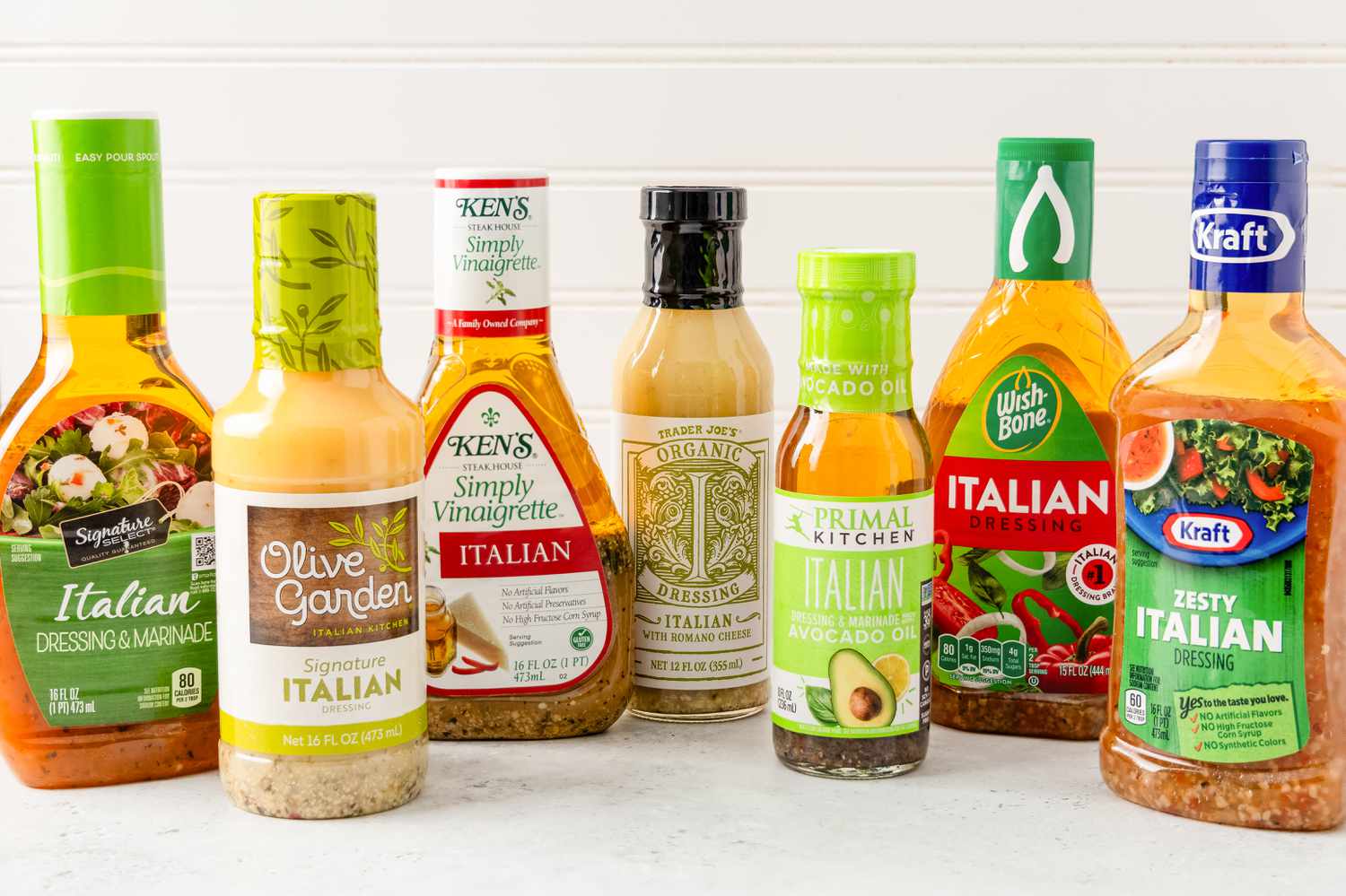
Salad dressings are more than just a tasty addition to your greens—they're a culinary art form with a rich history and diverse flavors. Ever wondered what makes your favorite dressing so irresistible? From the tangy zest of vinaigrettes to the creamy goodness of ranch, each dressing has a unique story and set of ingredients that make it special. Did you know that Caesar dressing was invented in Mexico, not Italy? Or that ranch dressing is the most popular in the United States? Whether you're a fan of classic dressings or adventurous enough to try something new, there's always something fascinating to learn about these flavorful concoctions. Buckle up as we dive into 37 intriguing facts about salad dressings that will make you appreciate your next salad even more!
Key Takeaways:
- Salad dressings have a fascinating history, from ancient Babylonia to modern innovations. They offer health benefits and unique flavors, making them a fun and tasty addition to any salad.
- Whether it's the origins of vinaigrette or the quirky facts about ranch dressing, there's a lot to learn and enjoy about salad dressings. From cultural variations to health benefits, there's something for everyone to explore and savor.
The Origins of Salad Dressings
Salad dressings have a rich history, evolving from simple mixtures to complex recipes. Here are some fascinating facts about their origins.
- The earliest recorded salad dressing dates back to ancient Babylonia, where people used oil and vinegar.
- Ancient Egyptians enjoyed a mix of oil, vinegar, and Asian spices on their greens.
- The Romans preferred a dressing made from fermented fish sauce, known as garum.
- In the Middle Ages, salads were often dressed with a combination of vinegar, oil, and mustard.
- The French popularized vinaigrette in the 17th century, a simple blend of oil, vinegar, and herbs.
Popular Types of Salad Dressings
Salad dressings come in many varieties, each with unique flavors and ingredients. Let's explore some of the most popular types.
- Ranch dressing, created in the 1950s, is America's favorite, made from buttermilk, garlic, and herbs.
- Caesar dressing, invented in the 1920s by Caesar Cardini, features anchovies, garlic, and Parmesan cheese.
- Italian dressing, a zesty mix of vinegar, oil, and herbs, is a staple in many households.
- Thousand Island dressing, named after the Thousand Islands region, includes mayonnaise, ketchup, and pickles.
- Blue cheese dressing, made with blue cheese, mayonnaise, and sour cream, is a bold choice for salad lovers.
Health Benefits of Salad Dressings
While some dressings can be high in calories, many offer health benefits when used in moderation. Here are a few examples.
- Olive oil-based dressings provide healthy monounsaturated fats, which can improve heart health.
- Vinegar in dressings can help control blood sugar levels after meals.
- Yogurt-based dressings offer probiotics, which support gut health.
- Lemon juice in dressings provides vitamin C, boosting the immune system.
- Avocado dressings are rich in healthy fats and vitamins E and K.
Unusual Salad Dressing Ingredients
Some salad dressings feature unexpected ingredients that add unique flavors and textures. Check out these surprising additions.
- Tahini, a paste made from sesame seeds, adds a nutty flavor to dressings.
- Miso, a fermented soybean paste, brings umami richness to salads.
- Pomegranate molasses offers a sweet and tangy twist to dressings.
- Nutritional yeast, a deactivated yeast, adds a cheesy flavor without dairy.
- Sriracha, a spicy chili sauce, gives dressings a fiery kick.
Homemade vs. Store-Bought Dressings
Making salad dressings at home can be rewarding, but store-bought options offer convenience. Let's compare the two.
- Homemade dressings allow control over ingredients, ensuring freshness and quality.
- Store-bought dressings often contain preservatives to extend shelf life.
- Homemade versions can be customized to suit personal taste preferences.
- Store-bought dressings offer a wide variety of flavors and styles.
- Homemade dressings can be more cost-effective, using pantry staples.
Fun Facts About Salad Dressings
Salad dressings have some quirky and fun facts that might surprise you. Here are a few to enjoy.
- The world's largest salad weighed over 44,000 pounds and was dressed with gallons of vinaigrette.
- Ranch dressing has inspired a range of products, including chips and soda.
- Some people enjoy dipping pizza crusts in ranch dressing.
- Caesar salad was originally eaten with fingers, not forks.
- In Japan, sesame dressing is a popular choice for salads and even used as a marinade.
Salad Dressing Innovations
Innovations in salad dressings continue to emerge, offering new flavors and health benefits. Let's look at some recent trends.
- Plant-based dressings cater to vegans and those with dairy allergies.
- Low-calorie dressings use alternative sweeteners and thickeners to reduce calories.
- Probiotic dressings incorporate live cultures for gut health.
- Superfood dressings include ingredients like kale, chia seeds, and turmeric.
- Sustainable packaging for dressings reduces environmental impact.
Cultural Variations in Salad Dressings
Different cultures have their own unique takes on salad dressings. Here are some interesting examples from around the world.
- In Greece, salads are often dressed with a simple mix of olive oil, lemon juice, and oregano.
- Japanese salads frequently feature a soy sauce-based dressing with ginger and sesame oil.
Salad Dressings: More Than Just a Topping
Salad dressings aren't just about adding flavor. They bring history, culture, and even health benefits to the table. From the ancient Romans using oil and vinegar to the invention of ranch in the 1950s, dressings have evolved. They can transform a simple bowl of greens into a gourmet experience. Whether you prefer creamy, tangy, or sweet, there's a dressing for everyone. And let's not forget the nutritional aspect—many dressings contain healthy fats and essential vitamins. Next time you drizzle your favorite dressing, remember you're part of a long tradition. So, explore different types, experiment with homemade versions, and enjoy the rich world of salad dressings. They’re more than just a topping; they’re a culinary adventure waiting to be savored.
Frequently Asked Questions
Was this page helpful?
Our commitment to delivering trustworthy and engaging content is at the heart of what we do. Each fact on our site is contributed by real users like you, bringing a wealth of diverse insights and information. To ensure the highest standards of accuracy and reliability, our dedicated editors meticulously review each submission. This process guarantees that the facts we share are not only fascinating but also credible. Trust in our commitment to quality and authenticity as you explore and learn with us.


